The Independent's journalism is supported by our readers. When you purchase through links on our site, we may earn commission. Why trust us?
Samsung Galaxy Z fold 4 review: Spot the difference
Tiny improvements over last year’s flagship make the ultra-powerful folding phone a tough sell
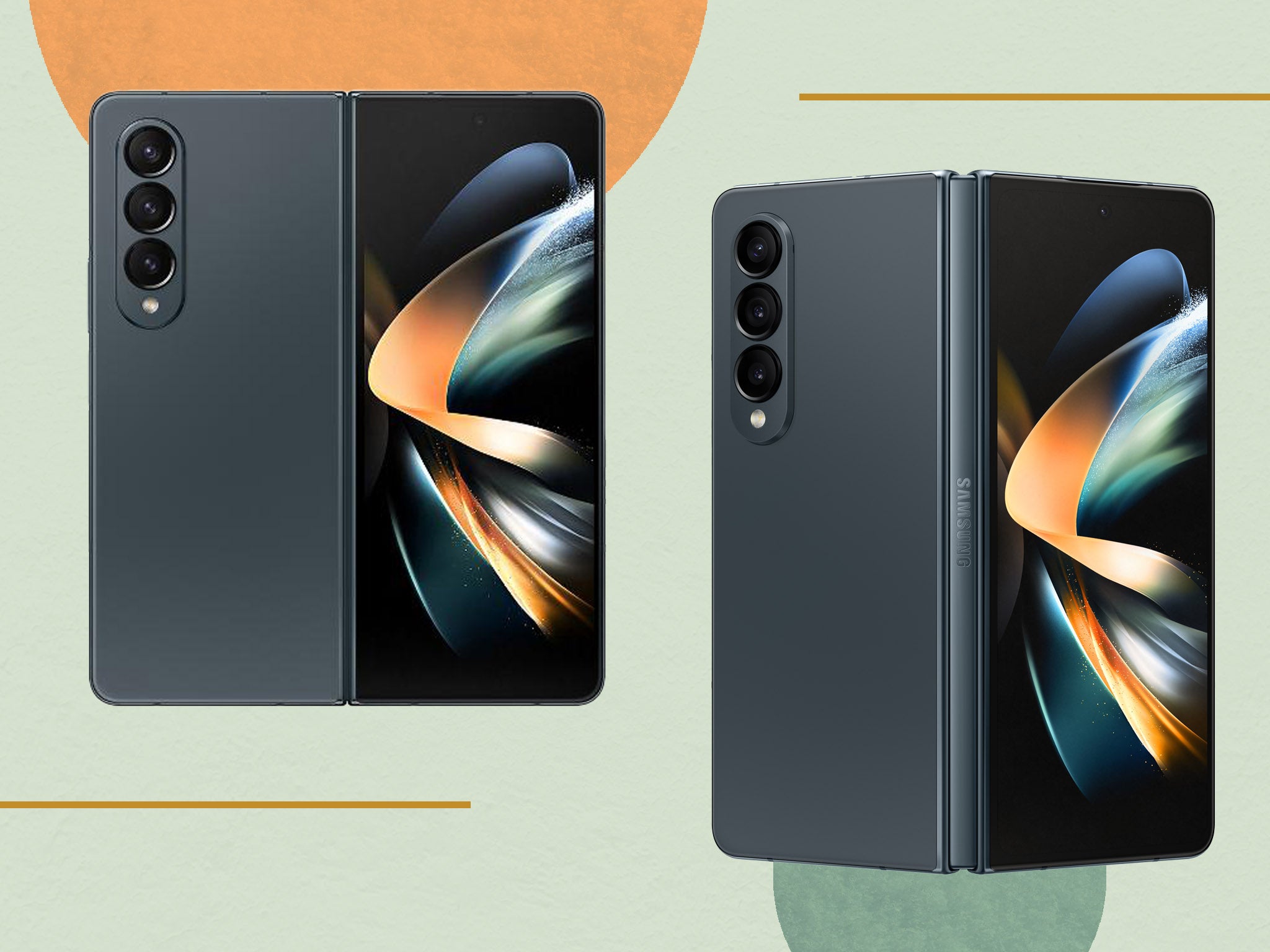
Your support helps us to tell the story
From reproductive rights to climate change to Big Tech, The Independent is on the ground when the story is developing. Whether it's investigating the financials of Elon Musk's pro-Trump PAC or producing our latest documentary, 'The A Word', which shines a light on the American women fighting for reproductive rights, we know how important it is to parse out the facts from the messaging.
At such a critical moment in US history, we need reporters on the ground. Your donation allows us to keep sending journalists to speak to both sides of the story.
The Independent is trusted by Americans across the entire political spectrum. And unlike many other quality news outlets, we choose not to lock Americans out of our reporting and analysis with paywalls. We believe quality journalism should be available to everyone, paid for by those who can afford it.
Your support makes all the difference.The Samsung Galaxy Z fold 4 is the tech giant’s most advanced folding phone yet – though you’d find that hard to tell just by looking at it.
On the surface, the Samsung Galaxy Z fold 4 is barely distinguishable from the fold 3. It costs £150 more than last year’s model did at launch, and it costs £650 more than Samsung’s other folding phone, the more mainstream Galaxy Z flip 4 (£999, Samsung.com). You can read more about that in our Galaxy Z flip 4 review.
But the Samsung Galaxy Z fold 4 isn’t for the average phone user. This is as much a productivity-focused tablet as it is a phone, folding out like a book to form an almost-square shaped screen that works with a stylus (sold separately) and supports multi-tasking with up to three apps open at once, and even desktop-style windows you can drag around the home screen.
Both Galaxy folding phones can be ordered now following their release date on 26 August. The flip 4 starts at £999 and the fold 4 at £1,649. Like absolutely everything else with a pound sign right now, both phones have gone up in price a little since last year.
We’ve been testing the Galaxy Z fold 4 to bring you our verdict. If you’re interested in the more affordable (and arguably cooler) Galaxy Z flip 4, check out our impressions of that device in our Galaxy Z flip 4 review.
How we tested
We’ve been testing the Samsung Galaxy Z fold 4 since it was announced. As most of the updates have been made to the software, we’ve paid close attention to the usability of the interface, improvements to performance and polish, Samsung services and general accessibility. Here’s our verdict...
Samsung Galaxy Z fold 4: £1,649, Samsung.com
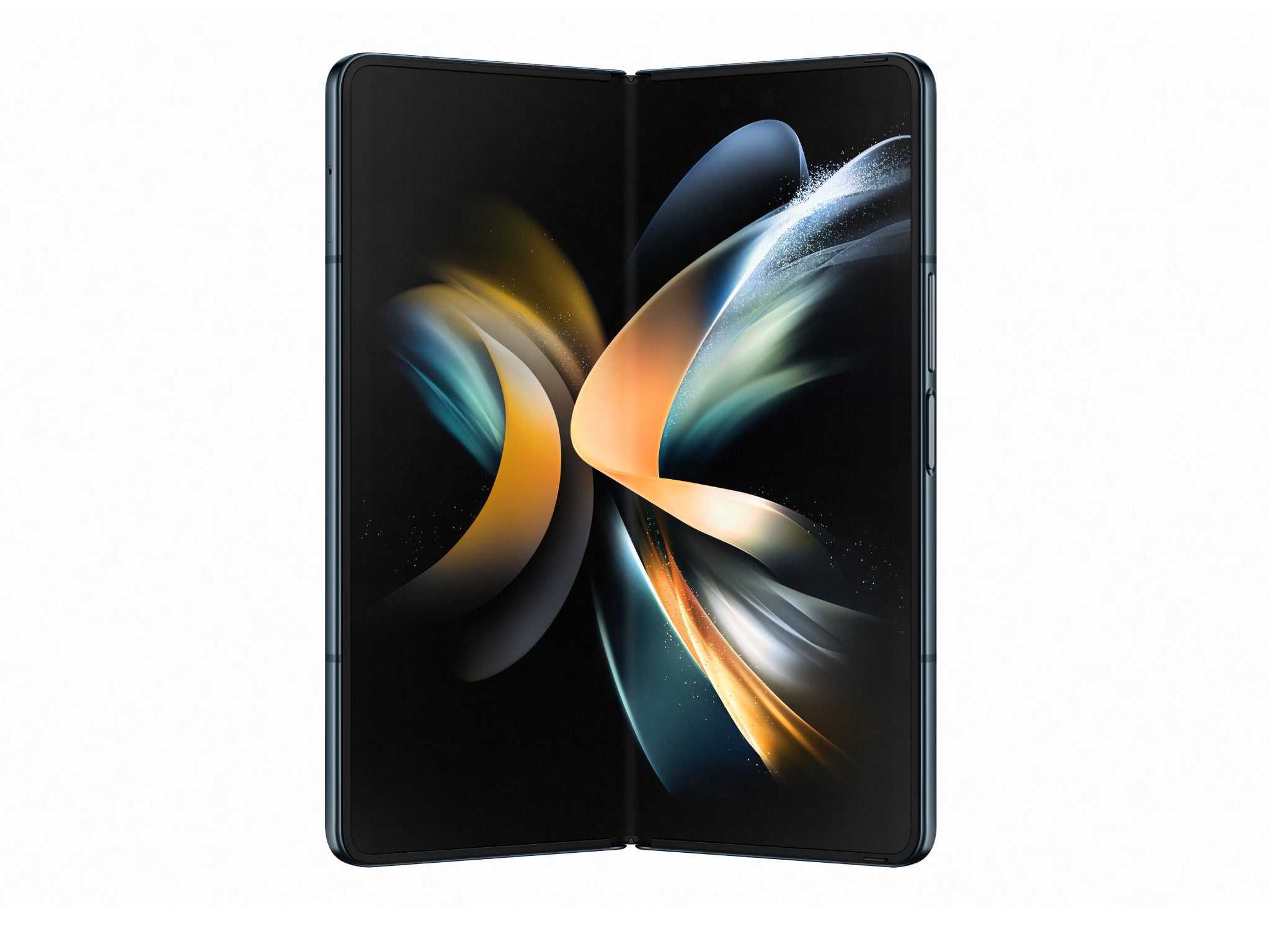
- Rating: 9/10
- Main display: 7.6in AMOLED, 2176 x 1812, 120Hz
- Cover display: 6.2in AMOLED, 2316 x 904, 120Hz
- CPU: Snapdragon 8 Plus
- RAM: 8GB
- Storage: 256GB / 512GB / 1TB
- Battery: 4,400mAh
- Size (unfolded): 155mm x 130mm x 6.3mm
- Size (folded): 155mm x 67mm x 14.2mm to 15.8mm
- Main camera: 50MP wide, 12MP ultrawide, 10MP telephoto
- Selfie camera: 10MP folded, 4MP unfolded
Pros: Durable design, top performance, brilliant 7.6.in unfolded display
Cons: Expensive, not many apps are optimised for the fold-out screen
Here’s how the Samsung Galaxy Z fold 4 works. When folded up it’s effectively a regular phone, albeit with an unusually tall shape and twice the thickness of a traditional smartphone. This front touchscreen is an impressive 120Hz AMOLED display with its very own holepunch selfie camera and face unlock biometrics.
Unlike the Galaxy Z flip 4, where the dinky 1.9in cover screen is mostly used for notifications and alerts, you can, in theory, use the Galaxy Z fold 4 entirely through the outer screen without ever having to open it. But crack it open and you’re looking at the phone’s showstopper of an inner display, a second 120Hz AMOLED screen, this time measuring 7.6in across the diagonal with a 2176 x 1812 resolution.
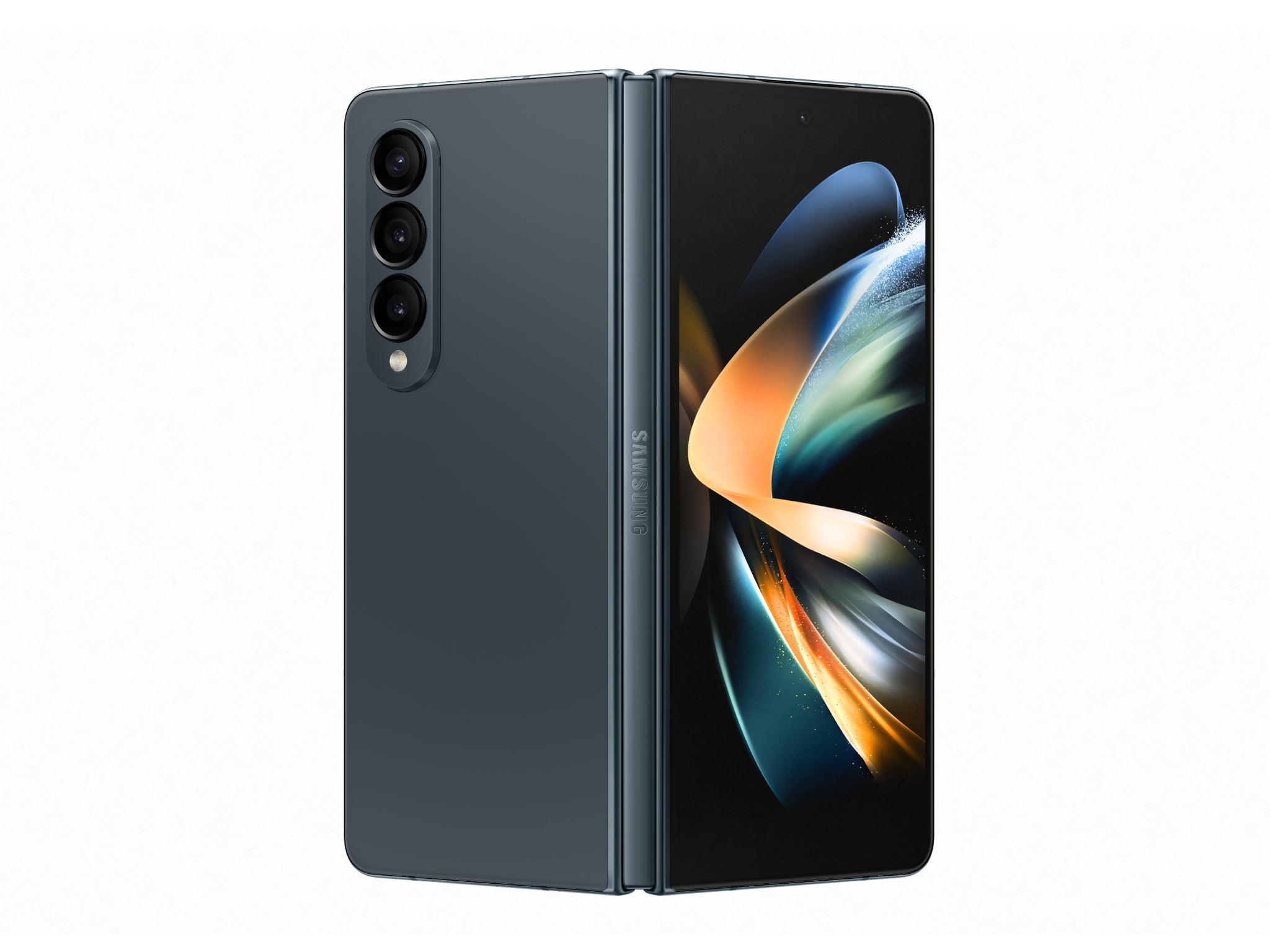
The moment you open the phone, whatever you were doing on the outer screen is seamlessly carried over to the inner screen. It’s a lot like pressing the full screen button on a desktop application, except here you’re physically opening the phone like a book to become more immersed in whatever app you had open.
This means you can use the cover display to quickly check your notifications, scroll through some tweets one-handed or send a message – the narrow keyboard is fine for this, but you won’t want to pen an essay. Then open the phone up to swap to the giant inside screen when you want to take a closer look at something, do some work, or when you’re just chilling out on the sofa.
Read more: Does the Nothing phone (1) beat the hype?
It’s a seriously impressive feat of engineering, but the Samsung Galaxy Z fold 4 faces the same challenges all previous folding phones have had to contend with. Not many app developers are making apps with interfaces that adapt to these non-standard, changing resolutions.
Samsung’s own set of apps work beautifully of course, as do plenty of tablet-optimised apps like Discord, Outlook and the rest of Microsoft’s Office suite. However, third-party apps, which have been designed for traditional phone screens, can look stretched out of proportion when splayed across the square-shaped display.
While the full-screen experience remains inconsistent, the Galaxy Z fold 4 is at least setting out to try and improve things. This year’s model introduces a desktop-style taskbar, which in conjuction with the option to resize app windows and pin them anywhere you like makes the unfolded interface feel more like a portable, handheld PC. Add the S-Pen (£34.06, Amazon.co.uk) stylus and the Galaxy Z fold 4 could feasibly replace your laptop.
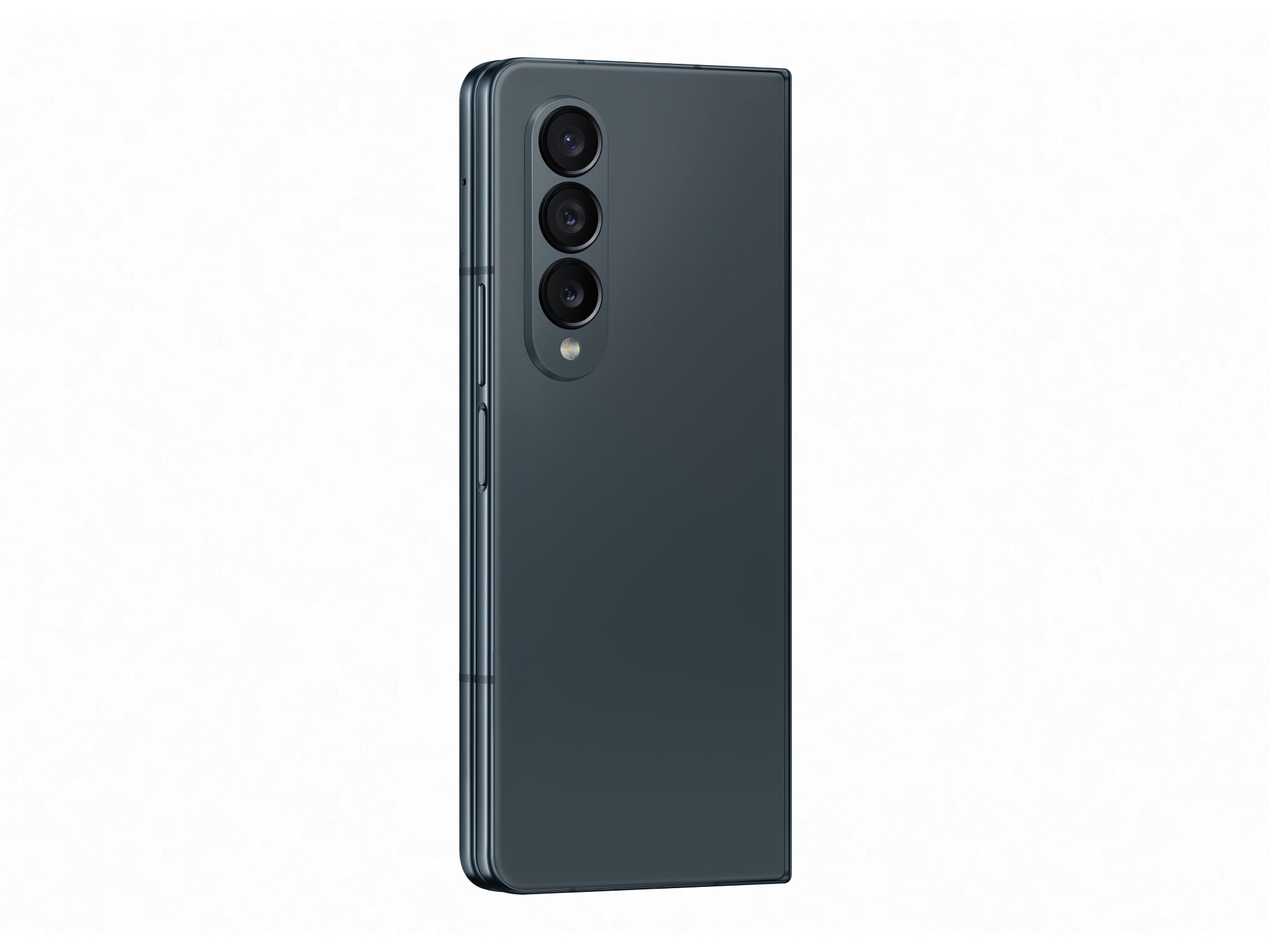
Outside of software tweaks to make the phone generally more usable, the Samsung Galaxy Z fold 4 has really only received baby-steps upgrades over the previous model. The new Snapdragon 8+ CPU is a little faster and more power efficient.
Like last year’s phone we found the battery life was touching single digits by the time we went to bed – impressive for a top-spec phone with two 120Hz screens, but anxiety-making if you leave home without a charger.
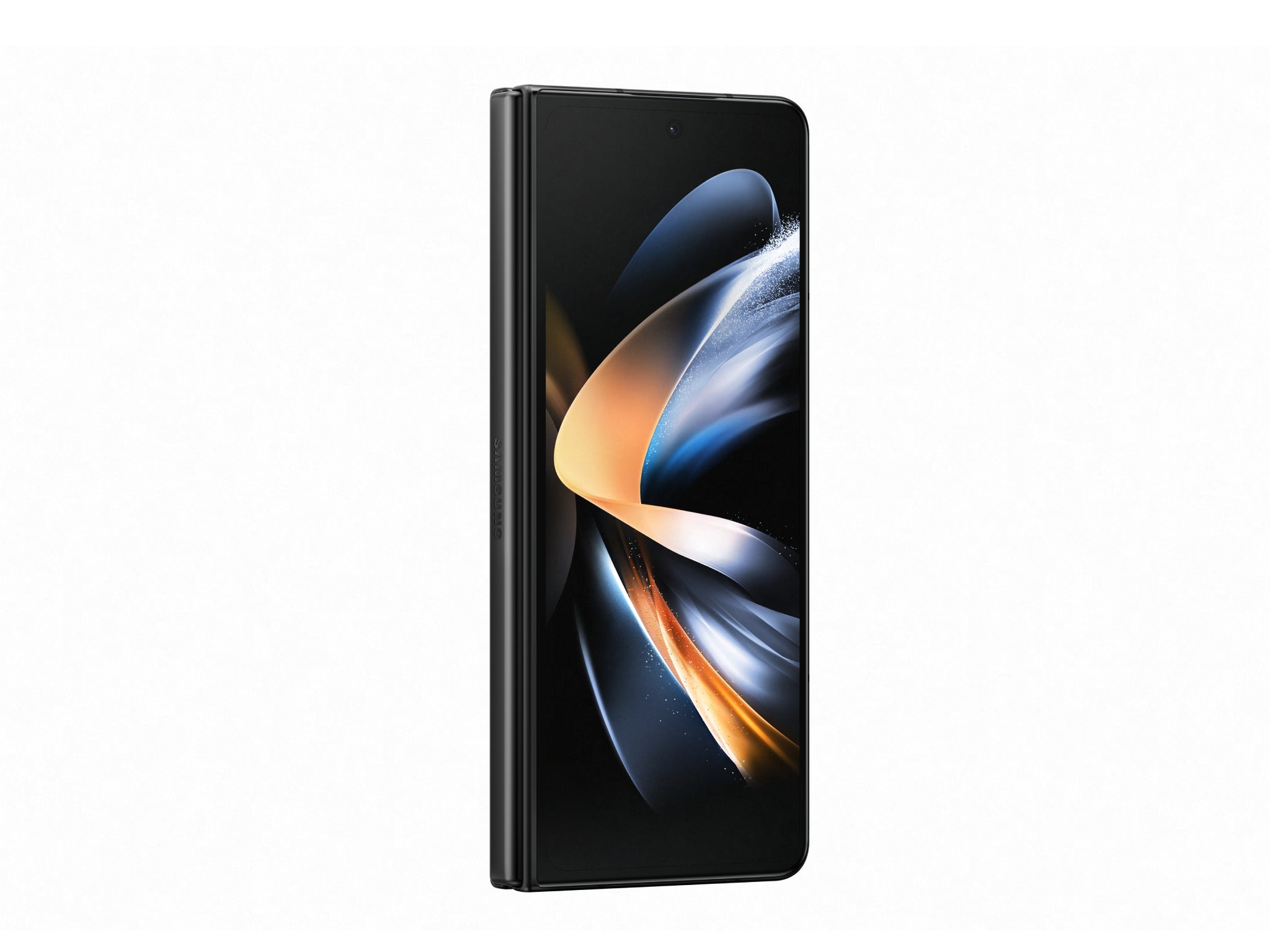
This year the outer display gets an even tougher Victus+ glass finish, which makes the thought of dropping a £1,650 phone on the floor marginally less terrifying. Couple that with the return of the solid-feeling aluminium casing, IPX8 water-resistance (that’s up to 30 minutes submerged in up to 1.5m of freshwater) and independent certification that the hinge can withstand 200,000 folds (that’s 100 per day for five years), and the Galaxy Z fold 4 is a tough nut.
Cameras seems to cover every available surface of the Galaxy Z fold 4. In total there are five, and while they don’t beat the camera array of the flagship S22 ultra, they’ve all been improved slightly since last year. The three rear lenses comprise a 50MP main sensor, a wide angle lens and a telephoto lens with 3x optical zoom, plus 30x digital zoom with Samsung’s fancy SuperZoom technology.
Read more: The Pixel 6a is a budget phone with Google’s best features
The cover display also has a holepunch selfie camera, while the main display has a second under-screen selfie camera, which magically disappears into the display when it’s not needed. Cleverly, the folding design also allows you to use the superior-quality rear cameras to take a selfie, by turning the cover display into a live viewfinder.
The verdict: Samsung Galaxy Z fold 4
Starting at £1,649 (more expensive than the most expensive iPhone) the Samsung Galaxy Z fold 4 is still very much a phone for phone enthusiasts, and about as far from the mainstream as you can get. But with the usual caveats, the Samsung Galaxy Z fold 4 is easily the best folding phone we’ve tested.
Like the smaller and more affordable Galaxy Z flip 4 (£999, Samsung.com) the new phone is a refinement of last year’s device rather than a generational upgrade. Owners of the Galaxy Z fold 3 will struggle to justify making the leap, but if you own an older Galaxy Z fold or you’re ready to splash some cash on a truly unique phone, this is still the best foldable your money can buy.
Find top mobile deals from Independent compare
Protect your identity online and browse securely with our pick of the best VPNs in 2022


